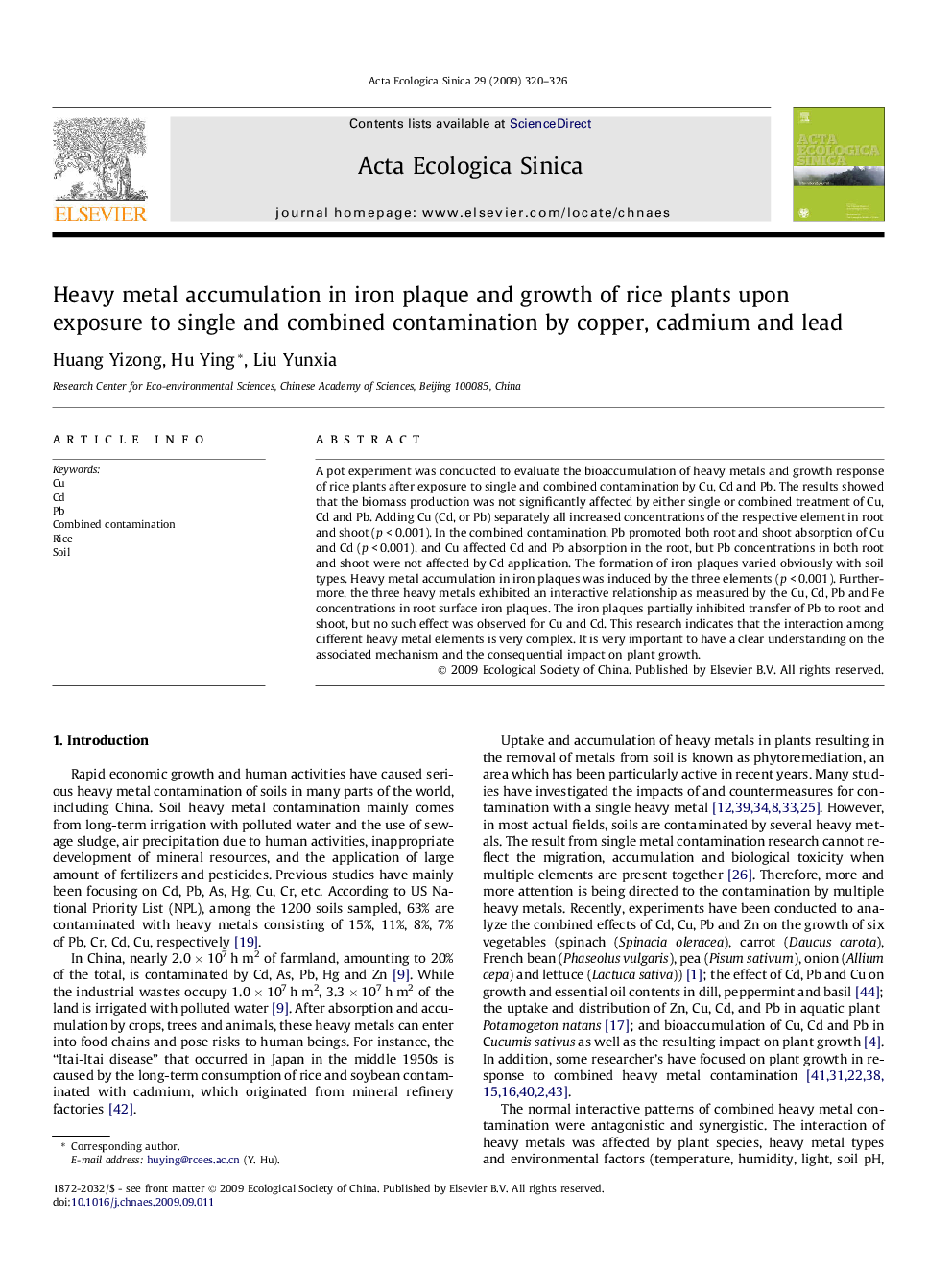| Article ID | Journal | Published Year | Pages | File Type |
|---|---|---|---|---|
| 4380141 | Acta Ecologica Sinica | 2009 | 7 Pages |
A pot experiment was conducted to evaluate the bioaccumulation of heavy metals and growth response of rice plants after exposure to single and combined contamination by Cu, Cd and Pb. The results showed that the biomass production was not significantly affected by either single or combined treatment of Cu, Cd and Pb. Adding Cu (Cd, or Pb) separately all increased concentrations of the respective element in root and shoot (p < 0.001). In the combined contamination, Pb promoted both root and shoot absorption of Cu and Cd (p < 0.001), and Cu affected Cd and Pb absorption in the root, but Pb concentrations in both root and shoot were not affected by Cd application. The formation of iron plaques varied obviously with soil types. Heavy metal accumulation in iron plaques was induced by the three elements (p < 0.001). Furthermore, the three heavy metals exhibited an interactive relationship as measured by the Cu, Cd, Pb and Fe concentrations in root surface iron plaques. The iron plaques partially inhibited transfer of Pb to root and shoot, but no such effect was observed for Cu and Cd. This research indicates that the interaction among different heavy metal elements is very complex. It is very important to have a clear understanding on the associated mechanism and the consequential impact on plant growth.
